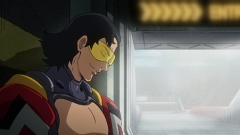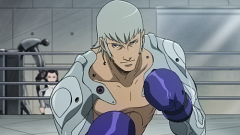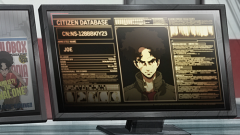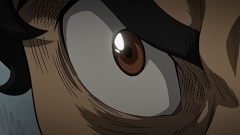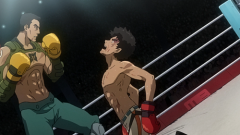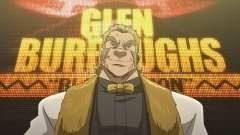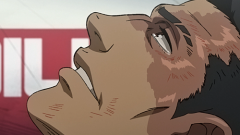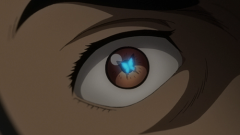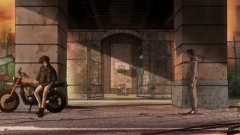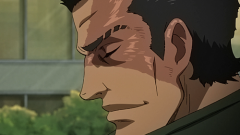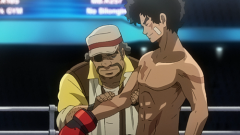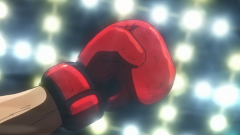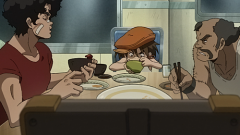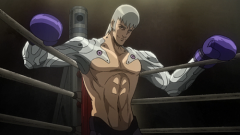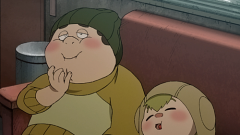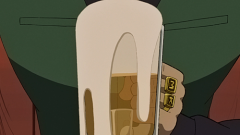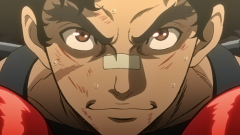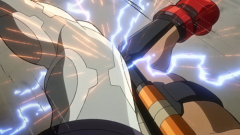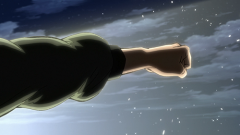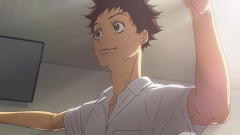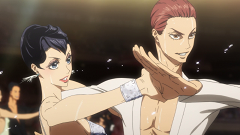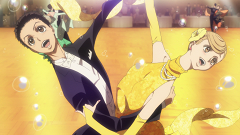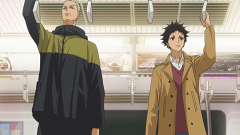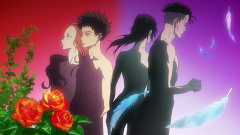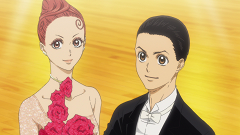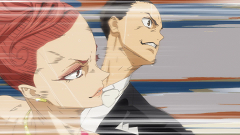[slideshow_deploy id=’25673′]
If you want a comparison to psgels’ reviews:
Chihayafuru
Heaven’s Memo Pad
Chihayafuru (Madhouse)
Chihayafuru is a sports show that done right. Moreover, it combines many good aspects of both josei and sports, making it thrilling to follow, while provide enough growth and conflicts for the main characters to achieve. Let’s me first point out how niche this sport Karuta is (and all the more reason to applause the show for bringing this niche sport to mainstream audience). Karuta is the sport that embrace the old to the modern Japan, it has a mixture between sport and poetry, it can be play competitively by people of all genders (can you think of other modern sports that allow this?), and lastly, unlike shogi players where they are full-time professional, all karuta players – even the Master and the Queen – aren’t. Most of them have office job or currently in college/ high-school. The latter, in particular, is one of the reason that make Chihayafuru interesting. For you see, people come to this sport purely by their passion. Chihayafuru’s core theme is the exploration of discovering and following your own passion. Each character has their own reason to play karuta, but they share the same love for the sport and it’s inspirational to see the team keeps trying their hardest and keeps improving themselves for the thing they love.
Chihayafuru also benefits from the fact that it understands sports, in general. I have some sports background so trust me when I say this: unless you’re incredibly talented, losing is always your best mate. You tend to lose way more than you win. And losing freaking hurts. EVERYTIME. In addition, your number one opponent is always yourself. Through the course of this season, Chihaya loses lots of times, some of them she was expected to win but failed due to her own lack of confidence. The show understands that losing is a natural part of the game, and never shy away from that. Secondly, I’m really digging how Chihayafuru underlines the fact that each player has their own karuta game; as in you can see their own personality reflected through the styles they play. Chihaya is quick-tempered; she’s born with fast style and quick reflex. Taichi relies more on his memory, while Desktomu uses statistic and analysis and Kana through her knowledge of the one hundred poems (if I were to approach karuta I’d be like Kana, as the “competitive” part is my least concern). These styles fit the personality of each player and as a whole, it’s a firm reminder that there is multifaceted approach to the game and more than once Chihaya learns how to improve her game by observing the good quality of other players.
It helps that the josei part of the show, the undertone relationship of the three mains, remains as a backbone and never overwhelm the whole show. At least for now the romance is kept at the right balance, while allow our characters growing, both in the game skills and in their maturity. I still don’t buy much about the affection of Chihaya towards Arata but I can live with that. If I have one main complain, however, it is that because the sports drama is so well done, when Chihayafuru tries to create its own conflict, it usually falls flat. At the top of my head I could name 2 instances like that (the bully act when they were primary schoolers – actually this show has a very insensitive depiction of bullying; the little drama of Desktomu trying to quit in the middle of the tournament). Other mild complain I would have is how the show can be damn overbearing at times with so much tears. I’m starting to wonder whether it caused by the source materials or by Madhouse volume up the emotional response.
All in all, Chihayafuru is a clear winner. The pacing and the production are top notch, the matches are exciting and thrilling and the characters are relatable with both their quirks, their chemistry and their deep. This is one of those rare show that has universal appeal, given I can pretty much recommend Chihayafuru to any other viewers, anime fan or not, without much hesitation. Can’t wait to watch its second season.
Rating: 83/100
Heaven’s Memo Pad (J.C.Staff)
Well, I’m thoroughly bored.
And I already put aside many of its obvious issues (like NEET detective agency – yeah it doesn’t make sense to me. Or after finishing the show I still don’t get the title at all. I know KamiMemo explained it somewhere but I failed to grasp it).
But let’s be positive. I will address many of the show’s strengths first before touch upon its problematic parts. The production values of this show are surprisingly above par for a low-tier title. The art settings remain its best assets. Each of the setting has a personality of their own and I certainly remember the ramen store, Alice’s room and even the garden rooftop fondly. I also like the way each case takes up usually about 2 or 3 episodes, which for me is a right length to introduce, develop and resolve each case (Un-Go suffered from this). The actual cases are a bit mixed though, as I only enjoyed the first and the last cases. Each arc revolves around a character in Narumi and Alice’s circle, so it’s a good opportunity to flesh out the said characters too.
Or so I thought.
Here’s the biggest issue with KamiMemo: All the characters feel pretty empty. You often see how I complain about characters betraying their own personality, right? Now, this is the exact opposite problem. All the characters of KamiMemo have significant traits that made them stand out at first glance, but they keep that same lines of thought for an entire season and thus they become a bunch of cardboards who say “cheese”. It feels to me that I was reading some typical Visual Novel about stereotyped stock characters. Take Doki Doki Literature Club, using those empty lines with a purpose. In this show they serve no purpose other than making the characters look cool. And cool dish gets cold really fast without any substantial support. As a result, it’s hard to care for any of the character, and it’s a big bummer because those cases based around those said characters. The main duo Alice and Narumi, likewise, still feel very plain and her tsundere act is not something that I need to see again. Alice sounds pretentious all the time and Narumi always shines when the plot calls for it; which again are just plain weak and terrible.
The actual cases themselves, are nothing worth bragging about. It’s neither realistic, nor well-made enough. Many contrived details in the service of moving the plot forward, many big words that trying too hard to impress and Alice has overpowered ability so that when she’s on board, everything is pretty much solved without much sweat. I figure the reason I like the first case is because the cast still feels fresh and I believe the last case redeems the show a fair bit (look, KamiMemo, at least Ayaka has some deeper level). KamiMemo still works as a mild mystery detective case, and the presentation is competent enough to keep viewers engaged, but the serious lack of well-developed characters makes it hard to invest to the show on deeper level.
Rating: 71/100
And done. Tell me your own thoughts on Chihayafuru and Heaven’s Memo Pad if you have seen either of these. Next post, to celebrate one of the most anticipated sequel of next season (no, not Legend of the Galactic Heroes), we will head back to the future for Steins;Gate and its diary in the future Mirai Nikki. Should be a fun ride, Doc. Till then.

